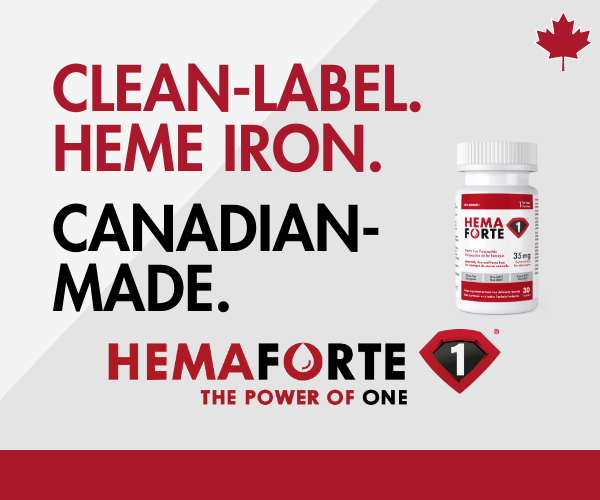Splitting hairs over dandruff
Minor Ailments
Dandruff is a relatively common condition, and most people would find that they have at least a few dandruff flakes if they looked closely. But while it may be a simple annoyance for most people, up to 25% of adults may have enough dandruff flakes to consider it troublesome. There is also an increased awareness of dandruff through advertisements in stores and on television.
Scientists know that dandruff is caused by a micro-organism named Malassezia. This yeast grows at the hair root and eventually spreads over the entire scalp. Since the scalp is irritated by Malassezia, it responds by overproducing new skin cells and shedding the old ones. This is known as increased cell turnover and results in thin white or greyish flakes called scales. People with dandruff may also find their scalps very itchy.
There are two types of dandruff: oily flakes and dry flakes. Oily flakes are bigger in size, and may stick to the oil on the scalp. People with oily dandruff may have visible flakes near the hair root on the scalp, but may not have a lot of dandruff on their clothes. Dry flakes are smaller, and tend not to stick to the scalp. People with dry dandruff may find that they have more flakes in their hair and on their shoulders.
Dandruff is also affected by a person's lifestyle and environment. Some people with dandruff have fewer flakes in the summer and when they are older. Dry weather and inadequate hair-washing may cause more flakes.
The best way to stop dandruff is to prevent it from happening. Dandruff treatment is aimed at removing flakes, relieving the itchiness and controlling the proliferation of Malassezia. As a start, people should wash their hair with a nonmedicated shampoo at least three times a week, gently massaging the scalp and rinsing well. If this does not work, medicated anti-dandruff shampoos can be used. In most cases, shampoos that do not require a prescription will be effective for dandruff. Different brands of non-prescription shampoos may contain a variety of ingredients (either as a single ingredient or as a combination), including selenium sulfide, salicylic acid, ketoconazole, coal tar, or soaps. Some brands have two versions of anti-dandruff treatments – one for oily flakes, and one for dry flakes. Ask your pharmacist to help you pick the right shampoo for you.
People with dandruff should continue to use nonmedicated shampoo for routine hair-washing before using the anti-dandruff shampoo. Anti-dandruff shampoos should be applied to the scalp for at least 5 minutes for best results. In general, anti-dandruff shampoos can be used up to a few times a week to control flakes; however, some brands may have specific recommendations on how they should be used. After the flakes are under control, anti-dandruff shampoos should be used less often. People who do not notice an improvement in two weeks should contact their doctor.
All material copyright MediResource Inc. 1996 – 2026. Terms and conditions of use. The contents herein are for informational purposes only. Always seek the advice of your physician or other qualified health provider with any questions you may have regarding a medical condition. Source: www.medbroadcast.com/healthfeature/gethealthfeature/Hair-Apparent-Keeping-Your-Scalp-Healthy
Time's a-ticking for aging hair
Minor Ailments
For men and women alike, hair is often a statement of personal style. A mane of thick, luxurious hair is desirable for many people, and some will go to great lengths to take care of their hair. Unfortunately, even hair cannot escape Father Time. Changes to hair do occur as people age, so it is important to understand how to keep hair healthy despite the aging process.
Hair is primarily made of a protein called keratin. The cuticle of a hair is an outer layer consisting of many overlapping parts that protect the inner hair shaft. When all of these overlapping parts lie flat, the hair looks shiny and healthy.
Some people may have thin hair shafts that are half the thickness of normal hair shafts. This quality is hereditary, and may result in fine, thin hair. Blond hair is usually the thinnest, red hair the thickest, and dark hair somewhere in between. Over time, hair roots may weaken and produce fine, fragile hair. People with thin hair to begin with may find that the aging process causes more noticeable effects. Other factors that may contribute to thin, damaged hair include repeated exposure to sun, water with a high mineral content (known as hard water), and perming and colouring agents.
There are several different products (shampoos, leave-in conditioners) that may help protect a damaged cuticle. These products may contain ceramides, proteins and vitamins to restore hair strength and fullness. A scalp massage may also help maintain healthy hair as people get older.
All material copyright MediResource Inc. 1996 – 2026. Terms and conditions of use. The contents herein are for informational purposes only. Always seek the advice of your physician or other qualified health provider with any questions you may have regarding a medical condition. Source: www.medbroadcast.com/healthfeature/gethealthfeature/Hair-Apparent-Keeping-Your-Scalp-Healthy
Hair to stay?
Minor Ailments
The amount of hair a person will have is affected by genetics, as all babies are born with a defined number of follicles. On average, people may have 80,000 to 150,000 hair follicles on their scalp. People with different hair colour also seem to have different numbers of hair follicles, but this does not seem to determine the overall thickness of hair. Blonds have the most follicles, but the thinnest hair. Redheads have the fewest, but have thicker and coarser hair. People with dark hair are somewhere in the middle.
The medical term for hair loss is alopecia. Hair loss does not usually occur overnight. Most people normally lose 50 to 100 hairs per day. There are a variety of causes of excessive hair loss, including hereditary thinning or baldness and improper hair care. Certain medical conditions and treatments may also be related to hair loss. For example, anemia, thyroid problems, chronic kidney problems, radiation treatment, and chemotherapy can all cause hair loss. Hair thinning or baldness due to genetics is the most common cause of hair loss in men. Improper use of chemical treatments, hairstyles that pull on hair, and shampooing or combing hair too often may also damage hair and contribute to hair loss.
Although there is no cure, there are a few medications (including minoxidil lotion and finasteride) that may help. Ask your doctor or pharmacist whether one of these medications may be right for you. Another option for permanent hair loss is hair transplantation. This process involves taking small portions of scalp (each with a few hairs attached) and planting them in areas where there is less hair. It is important to keep in mind that hair transplantation involves possible surgical risks.
Dermatologists (physicians who specialize in skin problems) are also trained to diagnose scalp conditions. Your healthcare professional can help find the cause of your hair loss and whether or not it can be treated with medications.
All material copyright MediResource Inc. 1996 – 2026. Terms and conditions of use. The contents herein are for informational purposes only. Always seek the advice of your physician or other qualified health provider with any questions you may have regarding a medical condition. Source: www.medbroadcast.com/healthfeature/gethealthfeature/Hair-Apparent-Keeping-Your-Scalp-Healthy
Finding a balance for dry and oily hair
Minor Ailments
Dry and oily hair types require different hair products for cleansing and conditioning. People with different types of hair may find that their hair care needs change over time.
The cuticle of a hair is an outer layer consisting of many overlapping parts that protect the inner hair shaft. When all of these overlapping parts lie flat, the hair looks shiny and healthy. Changes in the cuticle may result in dry hair. The overlapping parts of the protective covering no longer lie flat, but rather lift up and break. The hair eventually becomes brittle and difficult to style. People who do not protect their hair from the sun, wind, chemicals and other irritants may also have dry hair. Older people with dry skin, or people of any age with dark, curly hair or chemically-processed hair tend to have dry hair.
People with dry hair should shampoo no more than once a week if possible and should take extra care during and after chemical treatments such as perming or colouring. Rich, moisturizing shampoos and conditioners are recommended. An intensive cream rinse may also be useful. Styling products (gels, mousses) should be alcohol-free, as alcohol tends to dry out hair even more.
Family history plays a role in oily hair, as hormones affect oil-producing glands in the scalp. Teenagers with oily skin often have oily hair, but oil production may decrease to lower levels once they reach adulthood. However, one adult in five still has excessive oil production. Additional factors that may make hair oilier are other medical conditions, stress, and a poor diet.
Recommendations for people with oily hair include shampoos formulated to control and remove excess sebum (oil). Oily hair is difficult to style because it can be stringy and limp. It may be helpful to wash oily hair daily or even more frequently. A conditioner may not be necessary or you may only need to apply conditioner to the ends of your hair.
All material copyright MediResource Inc. 1996 – 2026. Terms and conditions of use. The contents herein are for informational purposes only. Always seek the advice of your physician or other qualified health provider with any questions you may have regarding a medical condition. Source: www.medbroadcast.com/healthfeature/gethealthfeature/Hair-Apparent-Keeping-Your-Scalp-Healthy
Dercos is a line of dermatological hair care products brought to you by Vichy
Laboratoires. Healthy hair starts with a healthy scalp. The Dercos Safety Charter
contains five key points:
- Expertise in the physiology of the scalp and hair root
- Active ingredients recognized by dermatologists
- Products formulated to minimize the risk of allergies
- Effectiveness rigorously proven through in vitro and clinical
tests conducted
under dermatological control
- Highly cosmetic formulas for greater user pleasure and visible results on
the hair fibre
Dercos Anti-Dandruff Shampoo with selenium sulfide and salicylic acid comes
in 2 formulas, for oily or dry flakes, to eliminate dandruff and relieve itching.
Dercos Frequent Use Dermo-Soothing Shampoo (with patented Calmoxine® technology)
is suitable for daily use by people with sensitive scalps.
Dercos Anti-Aging Hair Care Thickening Shampoo and Anti-Aging Hair Care Intensive
Thickening Treatment restore the hair's fullness and enhance its strength.
Dercos Nourishing-Reparative Cream Shampoo, Nourishing-Reparative Conditioner,
and Intensive Nourishing Mask have long-lasting anti-drying action for dry hair.
Dercos Oil Control Treatment Shampoo helps regulate sebum production, cleanses
the scalp, and delays oiliness.
All material copyright MediResource Inc. 1996 – 2026. Terms and conditions of use. The contents herein are for informational purposes only. Always seek the advice of your physician or other qualified health provider with any questions you may have regarding a medical condition. Source: www.medbroadcast.com/healthfeature/gethealthfeature/Hair-Apparent-Keeping-Your-Scalp-Healthy

